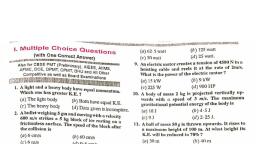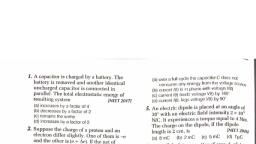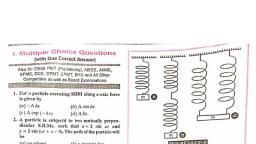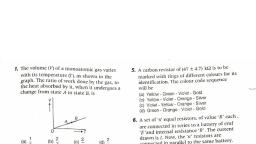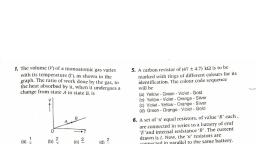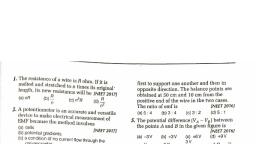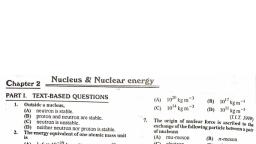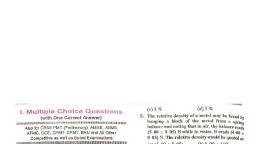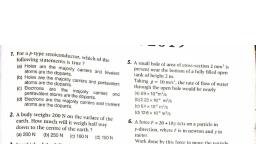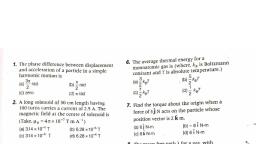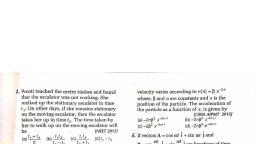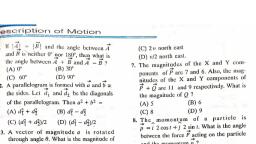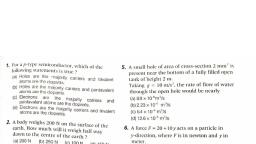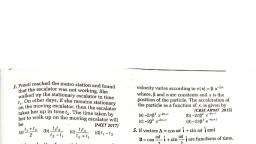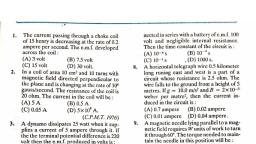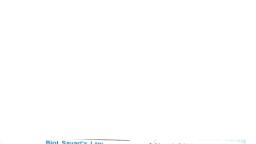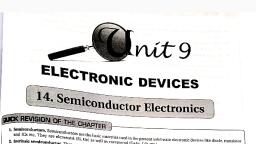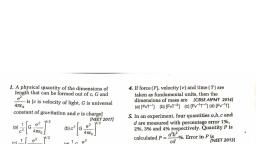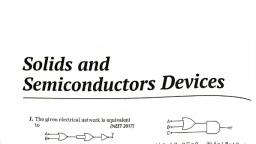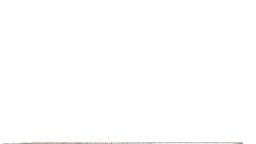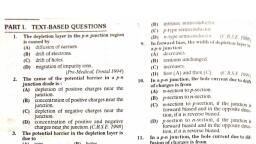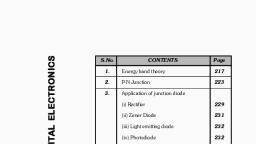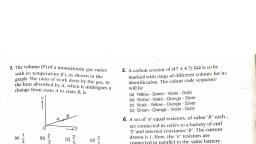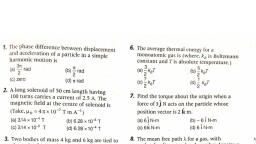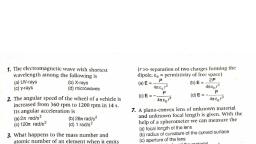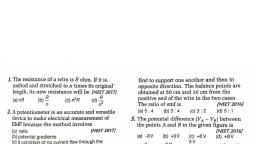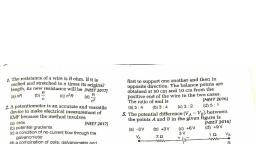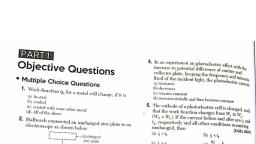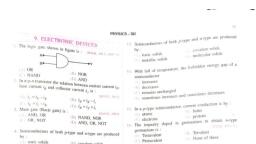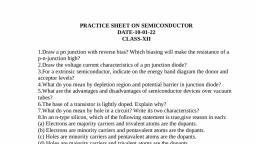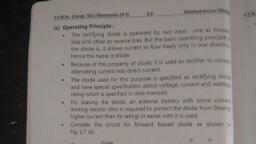Page 1 :
PART I. TEXT-BASED QUESTIONS ~, , 2, , 5., , The depletion layer in the p-n junction region, is caused by ay, , (A) diffusion of carriers,, (B) drift of electrons., (C) drift of holes., (D) migration of impurity ions., (Pre-Medical, Dental 1994), The cause of the potential harrier in a p-n, junction diode is :, (A) depletion of positive charges near the, junction,, (B) concentration of positive charges near the, junction., (C) depletion of negative charges near the, ' junction., (D) concentration of positive and negative, charges near the junction. (C.B.S.E. 1998), = potential barrier in the depletion layer is, jue to, , (A) ions (B) holes, (C) electrons (D) forbidden gap, (B.H.U. 1999), , The barrier potential of a silicon diode at room, temperature is, (A) O-3V (B) 0-7V, («) 1v (D) 2mV, , (C.E.T, 1998), Ap-n junction has a thickness of the order of, (A) lcm (B) 1mm, (Cc) 107&cm (D) 107? em, , (BLT. 1990), , Diffusion of free electrons across the junctions, of an unbiased diode produces, , (A) forward bias, (C) breakdown, , (B) reverse bias, (D) depletion layer., (CET. 1998), Which of the following statements is not true?, (A) The resistance of intrinsic semiconductors, decreases with increase of temperature,, (B) Doping pure Si with trivalent impurities, gives p-type semiconductors., (C) The majority carriers in n-type semi-conductors are holes,, (D) Ap-n junction can act as a semiconductor, diode. (LLT. 1997), A semiconducting device is connected in a, series circuit with a battery and a resistance, A, current is found to pass through the circuit,, The polarity of the battery is reversed, then the, current drops to almost zero. The device may, be a/an, (A) pn junction., , , , 10., , 1., , 12,, , 13., , 14,, , 15,, , (B) intrinsic semiconductor,, , (C) p-type semiconductor,, , (D) n-type semiconductor, (CASE 194, , In forward bias, the width of depletion layer ;., , ap-n junction Yer in,, , (A) decreases., , (B) remains unchanged., , (C) increases,, , (D) first (A) and then (C) (CBSE 10%, , In a p-n junction, the hole current due to ¢,, , of charges is from rift, , (A) n-section to p-section., , (B) p-section to n-section,, , (C) n-section to p-section, if the junct;, forward biased and in the opposite —, tion, if it is reverse biased., , D) p-section to n-section, if the junction j, me roort beset ont iit opposite dire:, tion, if it is reverse biased., , In a p-n junction, the hole current due to gig., , fusion of charges is from, , (A) n-section to p-section., , (B) _p-section to n-section., , (C) n-section to p-section, if the junction is, forward biased and in the opposite direc., tion, if it is reverse biased., , (D) p-section to n-section, if the junction js, forward biased and in the opposite direc., tion, if it is reverse biased,, , In a p-n junction, diffusion current is greater, , than the drift current (in magnitude), , (A) if the junction is forward biased., (B) if the junction is reverse biased., (C) if the junction is unbiased., , (D) cannot be predicted., When we apply reverse bias to a junction diole,, it, , (A) lowers the potential barrier,, , (B) _ raises the potential barrier., , (C) increases the majority. carrier current., , (D) decreases the majority carrier current., se (CET IMI, , f, In case of p-n junction diode at high beg, reverse bins, the current rises sharply:, value of reverse bias is known as soltage:, (A) cutoffvoltage. (B) zener voltage, (C) inverse voltage. (D) owreey. 19!), : to any, In a p-n junction diode not connected 1?, , circuit,, (A) the potential is same everywhere, , (BY the p-type side is at a higher pore”, “"~ the n-type side., , tial tha”
Page 2 :
there 18 an cliectric field, directed from the n-type, side., there is an electric field at the juncti, 0) directed from the p-type side tothe: ce, side. ; (LLT. 1998), the case of forward biasing of p-n junction,, , 16 i ich one of the following fig, , f ures, depicits the direction of flow o} carriers?, , “oO at the junction, , Side to the P-type, , , , , , , , , , , , , , , , , , , , , , , , , , , , , , , , , , , , , , , , , , , , , , , , , , , , P n, Be, Sh, (8), Pp n, Bi, {1 4, (c) (0), , (C.B.S.E. 1995 ;A.F.M.C. 1995), 11, Ap-n-junction diode can be used as :, {A) rectifier. (B) modulator, (C) demodulator {D) amplifier., (C.B.S.E. 1999 ; A.F.M.C, 1997), 18. A full-wave rectifier circuit along with the output is shown in the figure. The contribution, from the diade 1 is (are), , ‘Age jena, | t= V ~“, ‘NPUT ourpuT, , (Ay) Cc, («c) B,D, , , , (B) A.C, (D) A,B,C,D, , (LLT. 1996), 19. The part of a transistor which is heavily doped, , to prod: f rity is cal, i a, , (C) collector. \, (D) any one out of emitter, base and collector., (Pre-Medical/Dental, 1993), 20. vie 1-p-n transistor is used as an amplifier,, , (A) electrons move from base to collector., ©) oka move nomen obese., , , , , , 21,, , 22., , 24,, , 26,, , 27., , (C) electrons move from collector to base., (D) holes move from base to emitter., , (C.BS.E, 1996), , To use a transistor as an amplifier (common, base configuraticn),, , (A) both junctions are forward biased., , (B) both junctions are reverse biased,, , (C) the emitter-base junction is forward, biased and base- collector junction is, reverse biased,, , (D) no biasing voltages are required., , (Pre-Medical/Dental 1994), , In © common base amplifier, the phase dif, ference between the input signal voltage and, the output voltage (across collector and base), is, , (B) 2/4, (D) x, , (C.B.S.E. 1990), For a transistor, the current amplification factor is 0-8. The transistor is connected in common emitter configuration. The change in, collector current, when the base current changes hy 6 mA is, , (A) 0, (C) 2/2, , (A) 4:8mA (B) 6mA, (Cc) 8mA (D) 24mA, (C.E.T. 1991), , Inn-p-n transistor circuit, the collector current, is 10 mA. 1f 90% of the electrons emitted reach, the collector,, (A) the emitter current will be 9 mA., (B) the emitter current will be 11 mA., (C) the base current will be 1 mA., (D) the base current will be 0-1 mA., , (LLT. 1992), The current relationship between the two current gains a and f in a transistor is, , , , , , B=7eq = ® F=7SE, __8 _1+, (C.B.S.E. 1997), , The current gain § of a transistor is 50, The, input resistance of the transistor, when used In, the common emitter configuration, is 1 k®., The peak value of the collector a,c, current for, an a.c. peak input voltage of 0-01 V is, , (A) 100nA (B) 250KA, (C) 500KA (D) 800KA, (C.BS.E. 1999), , A transistor is preferable to a triode valve,, because if. i 5 = %, , (A) a Withstand larger changes in temperaure,, (B)__ has a higher input impedance., (C) can handle lara eee, (D) does not require a heater., (C.P.M.T. 1986 ;N.CER.T, 1978)
Page 3 :
28. Which of the following represents the digital mM., , signal :, , | \ Jt J —_—, (A) (8), , <—, , , , 37., , , , , , , , , , , , <—_, <—, , | se —, , {c) (0), , i 29. In the binary number system, 111 represents, (A) one, (B) three., (C) seven., , (D) one hundred and eleven., , , , PART II., , In the truth table given below, A and ore, inputs and Y, the output, Which of the fallen., ing has this type of truth table ? 7, , (A) AND gate. A oB |, (B) NOR gate. |, (C) OR gate,, , (D) XOR gate., , , , y, 1, 0, 0, 0, , , , (CET. 1999; CBSE 1997), , Which of the following gates corresponds to the, truth table given below :, , (A) NAND, (B) AND, (c) XOR, (Dp) OR, , (C.B.S.E, 1998, 1994 ; A.P.M.C. 1995), THOUGHT-BASED QUESTIONS, , , , , , , , t 30. Boolean algebra is essentially based on, j (A)_ logic (B) truth, 4 (C) numbers (D) symbol 38., (A.L.1.M.S, 1999), 31. In Boolean algebra, y = A + B implies:, (A) y equals A or B., (B) y equals sum of A and B., (C) y equals ncither A nor B., (D) y equals both A and B! 39,, { 32. In Boolean algebra, y = A.B implies, | (A) y equals product of A and B ., i (B) y equals A and B,, { (C) yequal Aor B., (D) y equals ncither A nor B., f 33. In Boolean algebra, y = A implies, fi (A) yequals A., f (B) yis not equal to A., (C) yisequalto — A., } (D) none of the above,, } 34, The symbol represents, i A, +] ;, B, Nay?, | (A) NOP gate (B) OR gate, (C) AND gate (D) NOR gate 40., (C.BS.E, 1996), . 35. <A truth table is given below. Which of the following has this type of truth table ?, (A) XOR gate A_ BI y, (B) NOR gate, (Cc) AND gate jo ° E, te t, (PD) OR gai Hs 41., , (CBSE. 1996) Buy, , , , When a potential difference is applied across,, , the current passing through, , (A) an insulator at 0 K is zero., , (B) asemiconductor at 0 K is zero,, , (C) ametal at 0 K is finite., , (D) ap-n diode at 300 K is finite, if it is reverse, biased, (LLT. 1999), , The identical p-n junction may he connected in, , series with a battery in three ways as shown in, , the circuits given below. The potential drops, , across the two p-n junctions are equal in, , [~ = "] Pin, Pia, , (i) (ii), , , , , , , , , , , , , , , , , , , , , , , , , , , , , , , , , , , , , , , , (A), (B), , circuit (#) only., circuits (i), , and (ii), circuits (i), and (iii) (iit), , (D) circuits (i) and (iii) (A.F.C 199), , When a p-n junction diode is forwardthe hart across the junction ", mainly due to, , (A) drift of charges., , (B) diffusion of charges., , (C) both drift and diffusion of chars or, (D)_ depends on the nature of eee 194), , (Pre-MedicallD, When a p-n junction diodie is reverse et, , the Now of current across the junction *, ly due to, , , , , , , , n|p mT, , , , , , , , , , , , , , (c), , , , , , seal
Page 4 :
r A) diffusion of charges, —, , a, , , , , ) rift of charges,, oO both drift and diffusion of charges., (p) depends upon the nature of the material., , (CET.1, , qwo identical capacitors each of Sandinanel, are charged to the same potential V and are, used to forward and reverse bias two identical, junction diodes as shown in figures,, , —, :, , c, a, , it} (ia, , , , , , +, 2), +, +, , , , , , , , The charges on the two capacitors at a timet =, CR are, , (A) () CV (ii) CV, (B) (i) CVie (ii) CV, () () CV (i) CVI, ) @) CVie (ii) CVle, , Here, ¢ = 2-718 is mathematical constant., , 43. The diode used in the circuit shown in figure, , has a constant voltage drop at 0-5 volt at all, currents and a maximum power rating of, 100 mW. What should be the value of the resistor R connected in series to the dioide for ob, , , taining maximum current ?, , (A) 5Q R O5v, , (B) 5-62, , (C) 6-762, , (D) 102 =H, (C.B.S.E. 1997), , 44. The circuit shown in the figure contains two, , 45. In which of the, , \ os, , diodies each with a forward resistance of 50 2, and with infinite hackward resistance. If the, battery voltage is 6 V, the current through the, 100 Q resistance (in ampere) is, , D, 1502, , (A) zero, (8) 0-02 D2 502, © 0-03 —— ee |, D) 0-096 H——{ nw —, , (LLT. 1996), configurations of transistor,, The voltage gain is highest 7 “ae :, , , , , , , , , , 49., , $1., , 1333, (A) Common base,, (B) Common emitter., (C) Common collector,, (D) Same in all the three,, , In which of the configurations of a transistor,, the power gain is highest ?, , (A) Common base., , (B) Common emitter., , (C) Common collector., , (D) Same in all the three., , A transitor is used in the common emitter, , mode as an amplifier. Then,, , (A) the base-emitter junction is forwardbiased., , (B) - the base-emitter junctior is reversc-biased., , (C) the input signal is connected in series with, , the voltage applied to bias the base-emit4 ter junction., (D) the input signal is connected in series with, the voltage applied to bias the base-coliector junction, (LLT. 1998), In the circuit shown here, the transistor used, has a current gainf = 100, What should be the, bias resistor Rp, so that V.~=5V. (Neglect, , Ve)», (A) 200 x 10°Q, , @) 10°2, , (C) 500Q, , , , @) 2x12, , (Pre-Medical/Dental, 1994), , An oscillator is nothing but an amplifier with, (A) a large gain., (B) negative feedback., (C) positive feedback., (D) no feedback., , (C.B.S.E. 1995 ; Pre-Medical/Dental, 1994), The output of the following logic circuit is, , A y’, , , , () y=AFT — B) y=At8, , (©) y=AB (D) y=A-E, , The combination of the two basic gates shown, in Q. 50 represents, (A) NAND gate., , (B) NOR gate., (C) NOT gate., , @) = XOR gate.
